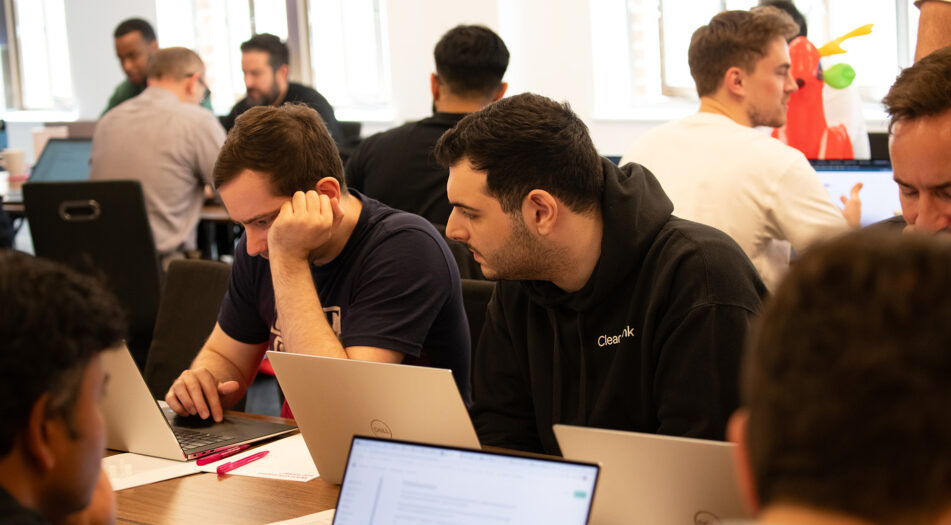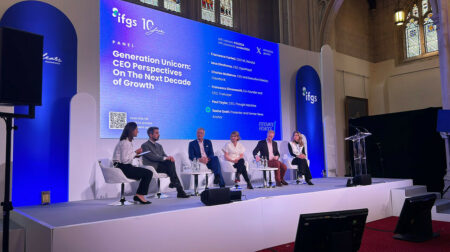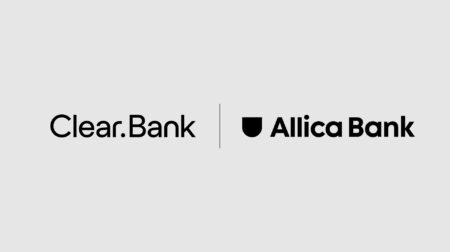ClearBank Hackathon: Generative AI Part 2

I recently had the pleasure of hosting our second hackathon, where teams from across the technology and engineering functions got the opportunity to step away from the day-to-day work and spend time prototyping new ideas with the latest generative AI technologies.
Previously, I discussed how the first generative AI hackathon focussed on building a new HR tool as a proof of concept for how this technology could be implemented at ClearBank. That project began with a problem statement and internal feedback that finding and understanding expense policies was time-consuming.
For our second instalment, we took a slightly different approach that allowed us to examine the use of Generative AI to build new tools and have some fun along the way. It began with a broader remit: "How can ClearBank 10x our customer experience safely and responsibly?”
To prepare for the task ahead, our CEO Charles McManus opened proceedings by challenging teams to think differently and unleash their creativity by diving head-first into the world of possibilities that AI might deliver. There was no idea too big or too small if it could deliver a meaningful benefit.
With the challenge laid down, the teams got down to business.
ClearBank is a significant user of Microsoft products and services. With its investment into OpenAI, we can leverage the commercial scale of OpenAI and Azure, specifically, the GPT-4 models.
The aim of our hackathon series is to go through technology, business discovery, and governance processes and, to avoid becoming too generic, focus on key areas where we believe it could deliver bank-wide operational efficiencies.
Naturally, with such a nascent technology, we had to ensure that security and data protection were sufficient before any work began. We’ve engaged with Microsoft to ensure that ClearBank retains all data, it does not leave our environment and controls and is not used for further training of the AI.
The teams broadly focused on tools that would boost operational efficiency by reducing manual processes and offer the potential to increase the value-add activities completed within Operations teams, covering:
- Client queries: How to effectively manage the broadest questions to the most technical, including any incident notifications and responses. This included time-sensitive queries that have the potential to be high in volume or those managed by a single team that requires knowledge across multiple domains for an efficient resolution. For example, one team focussed on how AI could support the Data Team with ad hoc requests.
- Internal queries: How to deal with high volumes of ad hoc requests across a broad range of topics and often with different required response timeliness. For example, one team focussed on how AI could deliver a new approach to providing an IT Service Desk through additional self-serve elements. Another group built a compliance companion for more efficient supplier onboarding.
- Value-add services: How we use our knowledge and expertise to build new services for ourselves and our clients. This included a tool for scanning abusive messages within the Faster Payments Service (FPS), a payment scheme knowledge extractor, and a financial insights tool that delivers smarter spending categorisation. One team also tackled how to support clients and their customers when dealing with APP scams and fraud attempts.
This variety of ideas was exactly what we hoped to achieve. Not simply to play with the tech but to inspire our teams through the possibilities that Generative AI could deliver to our business and how we serve our clients.
I won’t get into the finer details of each of the nine presented ideas, so this doesn’t become the longest blog in ClearBank history. However, far from the prophecies of this tech replacing entire teams, we discovered its true power is in augmenting our knowledge and delivering efficiencies around queries - from basic ‘what does X mean’ to ‘this is the best approach to fixing Y’. The technology is here, the capabilities are real.
For example, one team’s results suggested that using AI to triage enquiries and offer a self-service option would see an almost 50% reduction in queries that would traditionally result in manual intervention. Crucially this approach didn’t reduce the accuracy of the fixes suggested. That, in turn, could see six-figure cost savings and almost seven-figure potential cost avoidance per year by 2027. An additional benefit is that the tool could reduce our carbon footprint with a simplified system relying on less energy to manage more client queries.
It would be remiss of us not to analyse many of the projects presented to understand further how and where they could benefit us. Whether they ultimately get introduced will depend on many factors. But we certainly can’t ignore the impact it could have and want to ensure we’re prepared for every eventuality.
On a final, more personal note, seeing the breadth of ideas and the thought put into each project was inspiring. It speaks volumes about the calibre of our technology teams and ClearBank’s culture of being ambitious and pushing ourselves to go outside our comfort zones.
This wasn’t playing with the technology for the sake of it being the shiny new toy. Each project looked at using AI through the lens of meaningful outcomes for the business, whether that was expressed in terms of delivering a better product for our clients or as time and money saved. Often it was all three.
I’m excited by the possibilities and look forward to sharing further details as we develop the ideas generated by these hackathons.
Tom Harris is the Chief Technology Officer at ClearBank, where he is responsible for driving the firm’s technology innovation and leading the continued build of our market-leading core technology platform.


